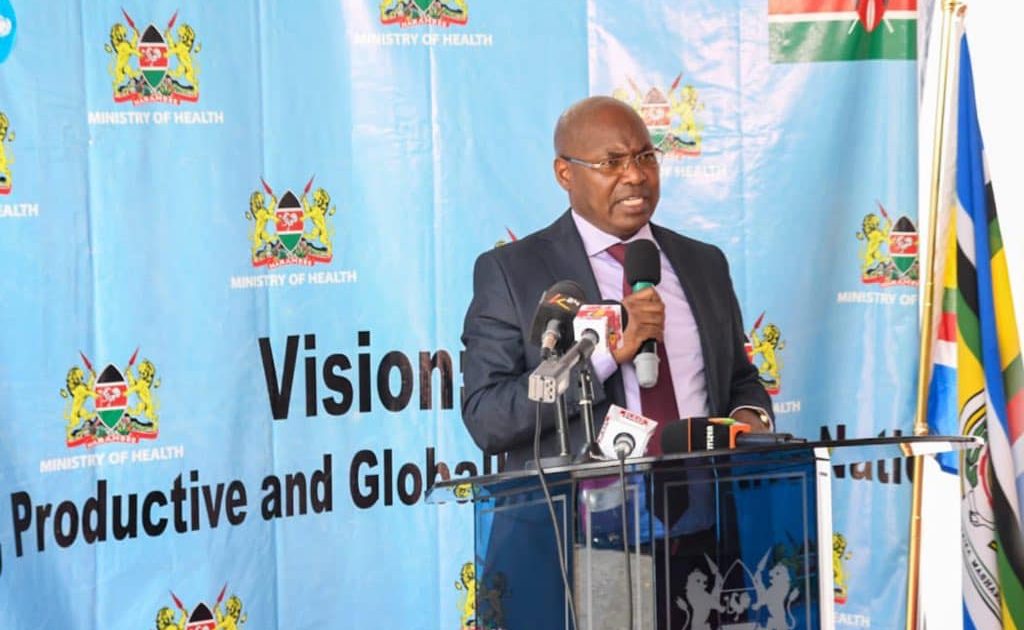Kenya has adopted the World Health Organisation (WHO) recommended three-test algorithm for HIV diagnosis, enhancing diagnostic precision.
The Ministry of Health said that the advances in the HIV testing precision affirms its commitment to quality services.
Medical Services Principal Secretary (PS) Harry Kimtai encouraged all citizens to continue utilizing HIV testing services nationwide as he urged healthcare providers and the public to actively support ongoing surveillance efforts to maintain the integrity of testing services.
“Despite recent challenges questioning the quality of HIV testing services, the Ministry of Health reaffirms its unwavering commitment to upholding the highest standards,” said the PS.
Kimtai explained that through rigorous capacity-building initiatives and robust quality assurance measures, the Ministry ensures the reliability and safety of testing services.
“Kenya remains steadfast in its fight against HIV/AIDS, ranking 7th globally for its HIV epidemic. With approximately 1.4 million People Living with HIV (PLHIV), the country persists in delivering comprehensive care and preventive measures,” said Kimtai.
The PS highlighted that as of December 2023, over 1.3 million PLHIV were under treatment across 3,752 facilities nationwide.
“Annually, Kenya conducts more than 8 million HIV tests across 8,851 testing sites, demonstrating the nation’s commitment to standardized and accessible testing services,” said Kimtai.
In 2019, in response to changing epidemiology, WHO recommended countries adopt a standard HIV testing strategy with three consecutive reactive tests for an HIV-positive diagnosis to ensure quality services as countries move toward and achieve the UNAIDS 95-95-95 targets.
The targets are aiming for 95% of people who are living with HIV to know their HIV status, 95% of people who know that they are living with HIV to be on lifesaving antiretroviral treatment, and 95% of people who are on treatment to be virally suppressed.
The guidance also highlighted the need to introduce dual HIV/syphilis rapid diagnostic tests (RDTs) and to phase out older testing technologies, including western blotting methods.
Many countries have since taken up this WHO guidance. For example, in the WHO African Region, compliance to HIV testing strategies increased from 8% in 2014 to 71% in 2021.
According to the WHO website, testing strategies should use tests serially, not in parallel and should not use a tiebreaker to rule-in HIV infection. Instead, those with discrepant test results should be ruled inconclusive and referred for further testing in 14 days to rule-in or rule-out seroconversion.
WHO recommends that all HIV testing algorithms use a combination of RDTs and/or enzyme-immunoassays (EIAs) to achieve at least 99% positive predictive value and use a combination of tests with greater than or equal to 99% sensitivity and greater than or equal to 98% specificity. WHO does not recommend the use of nucleic acid testing techniques within HIV testing algorithms for individuals more than or 18 months of age.
The WHO recommends that the first test in an HIV testing strategy and algorithm should have the highest sensitivity, followed by a second and third test of the highest specificity. Algorithms should be validated and verified to ensure high-quality and accurate testing.
According to WHO, all people newly diagnosed with HIV should be retested to verify their HIV status prior to starting Antiretroviral therapy (ART), using the same testing strategy and algorithm as the initial test. To minimise the risk of misdiagnosis, this approach should be maintained in settings in which rapid ART initiation is being implemented.
By Joseph Ng’ang’a





